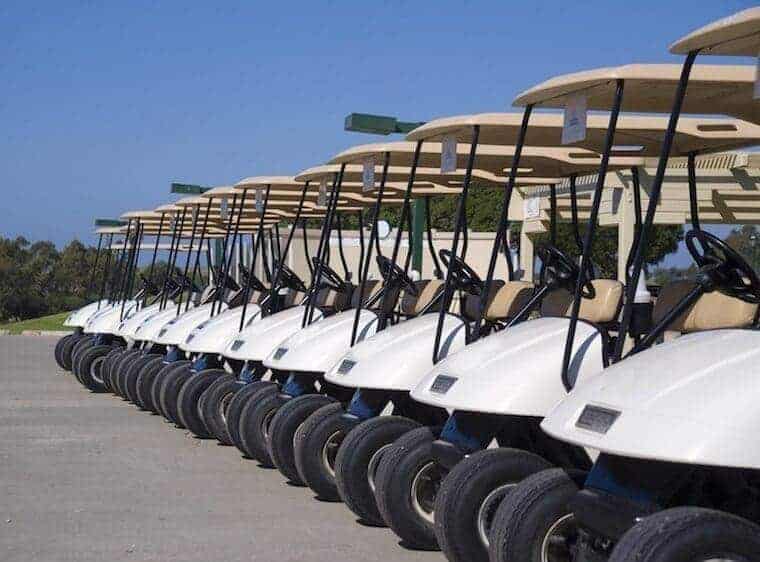If you can frequently be found on the links enjoying a few rounds of golf or if you live in a neighborhood with light traffic and low-speed limits, you may have given some thought to purchasing a new golf cart.
The cost of new golf carts has dissuaded many would-be owners, but it is possible to find used golf carts in great condition at a fraction of the price. However, it may take a little legwork to choose a quality cart that will last several years and is perfect for your needs.
Gasoline or Electric?
The first and most important consideration to make is whether you want a gasoline-powered golf cart or an electric golf cart. Golf carts with internal combustion engines have more powerful engines than those in electric golf carts, and they have a minimum range of 100 miles on a single tank of fuel. These golf carts are great for pulling trailers and climbing steep hills but are more costly to operate and maintain. In addition, gasoline golf carts are loud, and the smell of the exhaust can be quite unpleasant.
Electric golf carts have several advantages over gasoline-powered carts. Most importantly, they are less expensive to operate and maintain, and electric golf carts are environmentally friendly since they do not burn fossil fuels or produce polluting emissions. Electric carts also run quietly and smoothly, are easy to operate and can be driven indoors. The disadvantages, however, are that they have limited range on a full charge and the fact that the batteries will need to be replaced every five to six years.
Questions to Ask
When you locate a used golf cart that you could see yourself driving, refrain from approaching the seller overly enthused. Instead, keep a level head and ask the following questions to help determine the actual condition of the golf cart:
- When was the cart manufactured and first used?
- How was the golf cart driven and how often?
- How long has it been since the batteries were replaced?
- Have any parts been damaged, replaced or repaired?
Body, Canopy, and Frame
Undoubtedly, the first part of a used golf cart you will notice is the body, which will be followed shortly by the canopy. When examining the body, rust and other visible damage should be minimal and explainable. Small scratches and dents should be taken into consideration, but as long as they do not compromise the integrity of the body, do not let them stop you from buying. Faded paint and minor blemishes can always be repaired, and the cost of doing so is relatively low. Be wary of panels that are loose or unstable because they may require extensive repairs or total replacement.
If the golf cart has a canopy, ensure that it has not begun to rust. Once a canopy starts to rust, it may deteriorate quickly. In addition to visually inspecting the canopy, give it a little shake to test whether it is tight and secure.
Golf cart frames are susceptible to corrosion, usually in the form of rust. Even if the body and canopy seem to be in good condition, dig a little more deeply to uncover any damage to the frame. Problems with the frame are not easily repaired and are often a cause for junking a golf cart altogether.
Tires
Tires are easy and inexpensive to replace, but many people prefer that the tires on a used golf cart are in good enough condition to make it through at least one year. The grooves in the tread should be deep, and the tires should have no visible damage. Ensure they are inflated to the manufacturer’s specifications and can hold air when fully inflated.
Batteries and Wiring
The batteries are the most important part of an electric golf cart to examine because they can be costly to replace. Check the batteries for a date stamp. The date may be encoded by the manufacturer, or a two-digit year may be clearly stamped on top of the posts. The newer the batteries are, the longer they will last. Ensure that there is no corrosion on the batteries or the cables.
After inspecting the batteries, take a look at the wiring. All of the electrical wires should be neatly routed through the vehicle to prevent tangling and chaffing on moving parts. The high voltage of the batteries requires an impeccable electrical system to prevent dangerous short circuits.
Engine and Drive Train
The final inspection consists of listening to the engine and drive train as you test-drive the used golf cart. The cart should run smoothly and quietly. Strange grinding, whining or clicking sounds may be a sign of internal problems.
